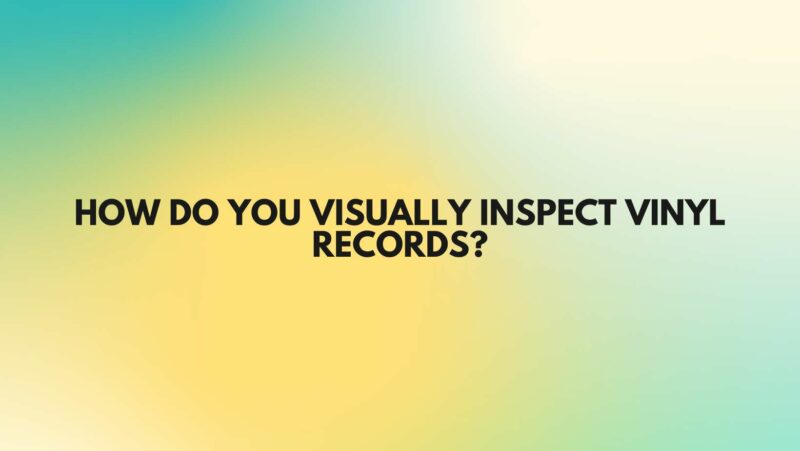Vinyl records are not only timeless pieces of music history but also works of art in themselves. To fully appreciate and maintain the quality of your vinyl collection, it’s crucial to perform a visual inspection regularly. In this comprehensive guide, we will explore the step-by-step process of visually inspecting vinyl records, helping you identify and address any issues that may affect their playability and longevity.
Tools You May Need:
- Clean, lint-free microfiber cloth
- Record cleaning brush
- Strong light source (e.g., LED flashlight)
- Magnifying glass (optional)
Step 1: Set Up a Suitable Workspace
Before you begin inspecting your vinyl records, prepare a clean and well-lit workspace. Make sure you have ample space to lay out your records comfortably without the risk of damaging them. A table or a clean, soft surface works well.
Step 2: Dust and Clean the Record
Before you start examining the record closely, it’s a good practice to remove dust and loose debris. Gently use a record cleaning brush or a lint-free microfiber cloth to wipe away any surface dust. Ensure that the record is free from larger particles that may scratch the surface during handling.
Step 3: Assess the Record’s Surface
Now, it’s time to scrutinize the vinyl record’s surface for any visible imperfections:
- Scratches and Scuffs: Carefully inspect the record under a strong light source, moving it in a circular motion to catch reflections. Scratches, scuffs, and marks can be visible under direct light. Minor surface marks may not affect playback significantly, but deep scratches can cause audible noise and may require professional repair.
- Warps: Place the record on a flat surface and observe it at eye level. Warps can distort the vinyl’s shape and cause playback issues. Minor warping may not be a major concern, but severe warping can impact the stylus’s ability to track the grooves properly.
- Fingerprints and Smudges: Look for fingerprints, smudges, or oily residue on the vinyl’s surface. These contaminants can affect sound quality and should be gently cleaned with a record cleaning solution if present.
Step 4: Inspect the Record Label
Examine the record label for any signs of damage or wear:
- Label Condition: Ensure that the label is firmly adhered to the vinyl and free from peeling or bubbling.
- Writing or Stickers: Check for any writing, stickers, or residue on the label. While some collectors may not mind these markings, they can affect the record’s value.
Step 5: Inspect the Record’s Edge
Inspect the outer edge of the record:
- Rough Edges: Carefully run your fingers along the outer edge to check for any rough spots or edge damage. Rough edges can affect the tracking of the stylus and should be handled with care.
Step 6: Check the Runout Groove
The runout groove, located near the center of the vinyl, often contains etchings, numbers, or other markings:
- Matrix Numbers: Examine the matrix numbers for any etchings or stamps. These markings can provide information about the pressing plant, mastering engineer, and potentially the record’s age.
Step 7: Repeat for Both Sides
Remember to perform a thorough visual inspection of both sides of the record, as each side may have different imperfections or damage.
Step 8: Document and Address Issues
As you inspect each record, take notes or photos of any issues you discover. Documenting the condition of your records can be valuable for cataloging purposes and for assessing any necessary cleaning or repair work.
Step 9: Store Properly
Once you’ve completed the visual inspection, store your vinyl records in a cool, dry, and upright position. Use polythene inner sleeves to protect the records from dust and debris, and ensure that they are stored vertically to prevent warping.
Conclusion
A thorough visual inspection is an essential part of maintaining and preserving your vinyl record collection. Regular examinations can help you identify issues early, allowing you to address them promptly and ensure that your records continue to provide the best possible listening experience. With proper care and attention, your vinyl collection can bring joy for years to come.


